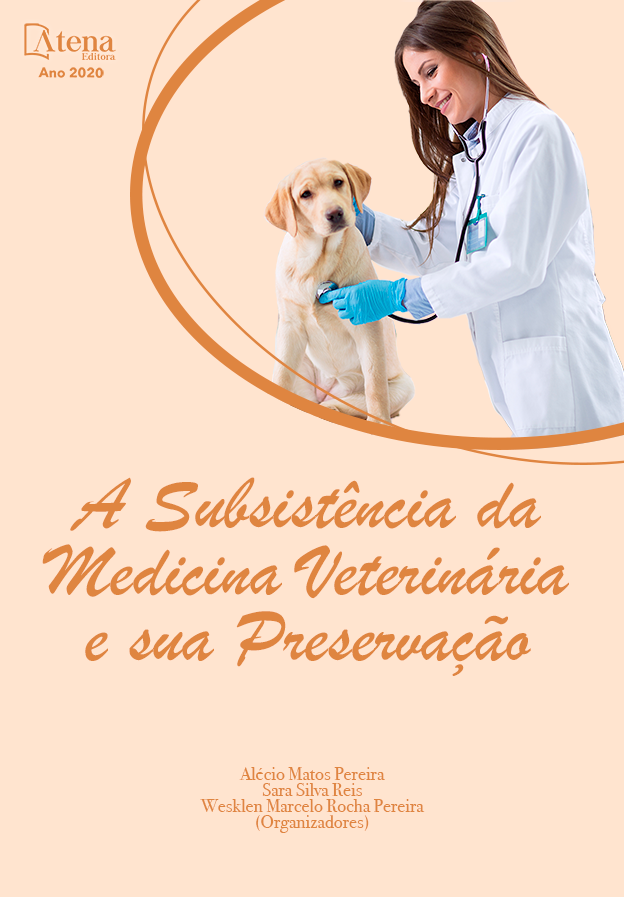
REPARAÇÃO FACIAL COM USO DE FLAP DE AVANÇO APÓS REMOÇÃO DE LINFOMA CUTÂNEO
A incidência de neoplasias nos cães vem trazendo novos desafios para estabelecer um tratamento ideal. A remoção cirúrgica de nódulos com margem de segurança ampla geralmente é simples de se realizar, porém em alguns casos de nódulos grandes em regiões de extremidades de membros, articulações e face, muitas vezes necessita-se uso de técnica reconstrutiva para oclusão da ferida. O flap de avanço é o mais utilizado na medicina veterinária por ser de simples execução. Relato de Caso: Cão macho SRD, 14 anos com massa ulcerada irregular de aproximadamente 10 cm de diâmetro em região infraorbitária nasal esquerda, comprometendo toda a pálpebra inferior. Após avaliação do paciente, optou-se pela remoção da massa associada à enucleação devido ao comprometimento da pálpebra. Devido suspeita de neoplasia maligna, a remoção foi feita com ampla margem. Para a reparação do defeito cutâneo, foi previamente planejado flap da região dorsal do pescoço associado a flap da região ventro-lateral do pescoço.
Exame histopatológico constatou linfoma epiteliotrópico. Iniciou-se o tratamento quimioterápico com Lomustina 70 mg/m² a cada 21 dias num total de três sessões. Neutropenia discreta e anorexia passageira foram os efeitos colaterais demonstrados pelo paciente. Durante o tratamento, não foi observado nenhum sinal de recidiva da neoplasia. Após três meses da cirurgia o proprietário relatou que o paciente apresentava dificuldade de deglutir e beber água. Detectou-se grande nódulo na parte rostral da língua, suspeitando-se de metástase. Indicou-se glossectomia parcial para histopatologia onde confirmou-se o linfoma novamente. O paciente foi acompanhado durante 45 dias após a última intervenção cirúrgica. O tutor foi relutante à quimioterapia desta vez e nenhum protocolo foi instituído. Em contato telefônico após 60 dias do último retorno, o proprietário relatou piora do animal, estando este prostrado e anorético há dois dias. Após sete dias o paciente veio a óbito.
REPARAÇÃO FACIAL COM USO DE FLAP DE AVANÇO APÓS REMOÇÃO DE LINFOMA CUTÂNEO
-
DOI: 10.22533/at.ed.84920261016
-
Palavras-chave: Cirurgia Reconstrutiva, Face
-
Keywords: Reconstructive Surgery, Face
-
Abstract:
The incidence of cancer in dogs has brought new challenges to establish an ideal treatment. Surgical removal of nodules with a wide safety margin is generally simple to perform, however in some cases of large nodules in regions of extremities of limbs, joints and face, it is often necessary to use reconstructive technique for wound occlusion. The advance flap is the most used in veterinary medicine because it is simple to perform. Case Report: Male dog, 14 years old, with an irregular ulcerated mass of approximately 10 cm in diameter in the left nasal infraorbital region, affecting the entire lower eyelid. After evaluating the patient, it was decided to remove the mass associated with enucleation due to the involvement of the eyelid. Due to the suspicion of malignant neoplasm, the removal was done with a wide margin. To repair the skin defect, a dorsal neck flap associated with a ventro-lateral neck flap was previously planned.
Histopathological examination found epitheliotropic lymphoma. Chemotherapy was started with Lomustine 70 mg / m² every 21 days, in total of three sessions. Mild neutropenia and transient anorexia were the side effects demonstrated by the patient. During the treatment, no signs of recurrence of the neoplasia were observed. Three months after the surgery, the owner reported that the patient had difficulty swallowing and drinking water. A large nodule was detected in the rostral part of the tongue, suspecting metastasis. Partial glossectomy was indicated for histopathology, where the lymphoma was confirmed again. The patient was followed up for 45 days after the last surgical intervention. The tutor was reluctant to chemotherapy this time and no protocol was instituted. In telephone contact 60 days after the last return, the owner reported that the animal worsened, which had been prostrate and anoretic for two days. After seven days the patient died.
-
Número de páginas: 12
- Matheus Teixeira Seixas E Silva


